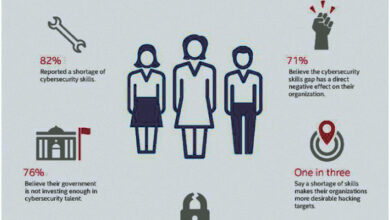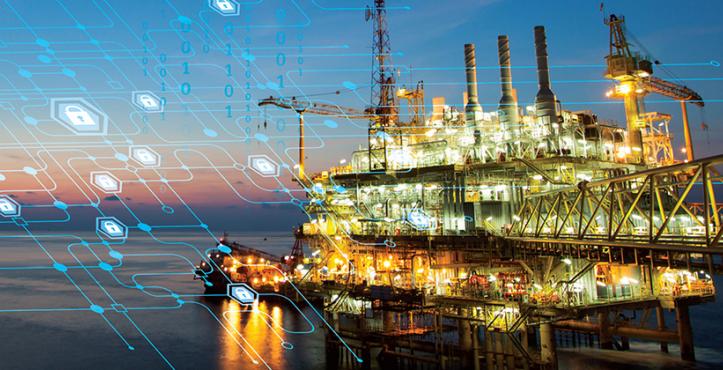
Cyber Attack on Europes Major Oil Terminal
Cyber attack on europes major oil terminal – Cyber attack on Europe’s major oil terminal: Imagine a scenario where the smooth flow of oil across Europe grinds to a halt, not because of a physical disruption, but because of a sophisticated cyberattack. This isn’t science fiction; it’s a very real and increasingly plausible threat. The potential consequences are staggering, impacting everything from our gas prices to the stability of the entire continent.
This post delves into the potential attack vectors, the devastating impact, and what steps can be taken to prevent such a catastrophe.
The vulnerability of critical infrastructure to cyberattacks is a growing concern globally, but the potential impact on Europe’s energy sector is particularly acute. We’ll explore the various ways a cyberattack could cripple oil terminals, from data breaches leading to operational paralysis to the complete shutdown of systems, potentially causing widespread chaos. We’ll also look at the geopolitical implications of such an attack, whether state-sponsored or by non-state actors, and discuss the crucial role of international cooperation in mitigation and response.
Impact Assessment
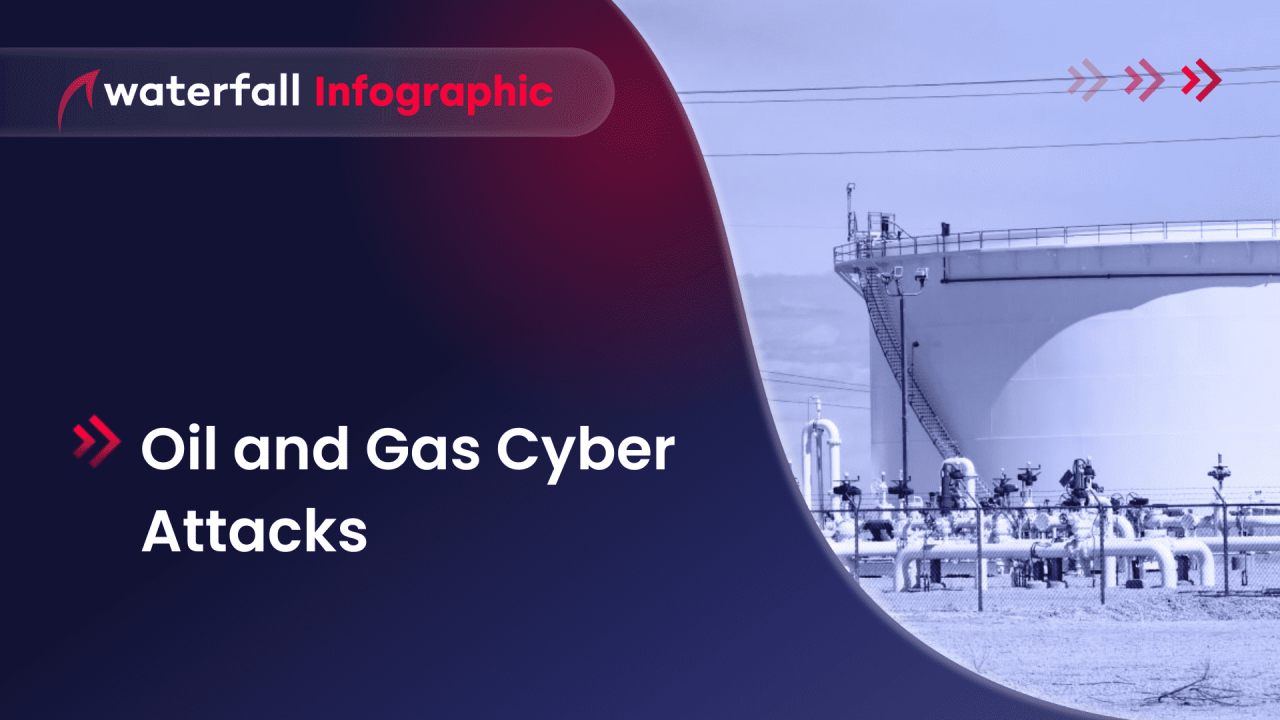
A successful cyberattack on Europe’s major oil terminals would have cascading and severe economic consequences, far exceeding the immediate disruption of oil flow. The interconnected nature of global energy markets means that the impact would be felt not just in Europe, but worldwide. The scale of the disruption would depend on the severity and duration of the attack, as well as the specific targets compromised.
Economic Consequences of a Cyberattack
The economic impact would be multifaceted. Direct losses would include the cost of remediation, lost production, and potential damage to infrastructure. Indirect costs would be even more substantial, stemming from supply chain disruptions, increased energy prices, and the potential for widespread economic slowdown. For instance, a prolonged shutdown could cripple industries reliant on oil, including transportation, manufacturing, and agriculture, leading to job losses and decreased productivity across various sectors.
The financial markets would also likely experience significant volatility in response to the uncertainty created by the attack. Consider the 2017 NotPetya ransomware attack, which cost businesses globally an estimated $10 billion; a similar attack on critical oil infrastructure would likely result in exponentially higher losses.
Disruption to Global Oil Supply Chains
Europe’s oil terminals are pivotal nodes in the global oil supply chain. A cyberattack could severely disrupt the flow of crude oil and refined products, leading to shortages in various European countries and potentially impacting global markets. The disruption wouldn’t be limited to Europe; global oil prices would likely spike, affecting countries that rely on European imports or those already experiencing supply chain vulnerabilities.
The ripple effects would be felt across multiple industries, potentially leading to production delays, rationing, and increased costs for businesses and consumers. A historical parallel can be drawn to the disruption caused by natural disasters, such as hurricanes, which temporarily cripple oil production and distribution, causing significant price increases.
Impact on Energy Prices for European Consumers
The most immediate and noticeable impact for European consumers would be a sharp increase in energy prices. Reduced supply coupled with increased demand would drive up the cost of gasoline, diesel, heating oil, and other petroleum-based products. This would disproportionately affect lower-income households who spend a larger portion of their income on energy. Furthermore, the increased energy costs would filter through the economy, impacting the prices of goods and services, leading to inflation and potentially reducing consumer spending.
The recent cyber attack on Europe’s major oil terminal really highlights the urgent need for robust security measures. We’re seeing a massive shift towards cloud-based systems, and understanding how to manage that risk is crucial; that’s where solutions like those discussed in this article on bitglass and the rise of cloud security posture management become invaluable. Ultimately, strengthening our cloud security posture is the key to preventing future attacks like this one targeting critical infrastructure.
The magnitude of the price increase would depend on several factors, including the duration of the disruption, the availability of alternative energy sources, and the effectiveness of government interventions.
Comparative Impact on European Countries
The impact of a cyberattack on Europe’s major oil terminals would not be uniform across all European countries. Some countries are more reliant on oil imports than others, and their geographical proximity to affected terminals would also play a significant role.
| Country | Economic Impact | Supply Disruption | Consumer Price Impact |
|---|---|---|---|
| Germany | High – significant industrial reliance on oil | High – major import hub | High – substantial increase in energy costs |
| United Kingdom | Medium-High – diversified energy sources but significant oil consumption | Medium – proximity to affected terminals | Medium-High – noticeable increase in energy costs |
| France | Medium – relatively lower oil dependence | Medium – less direct reliance on affected terminals | Medium – moderate increase in energy costs |
| Italy | High – significant oil imports | High – reliance on seaborne transport | High – substantial increase in energy costs |
Attack Vectors and Methods
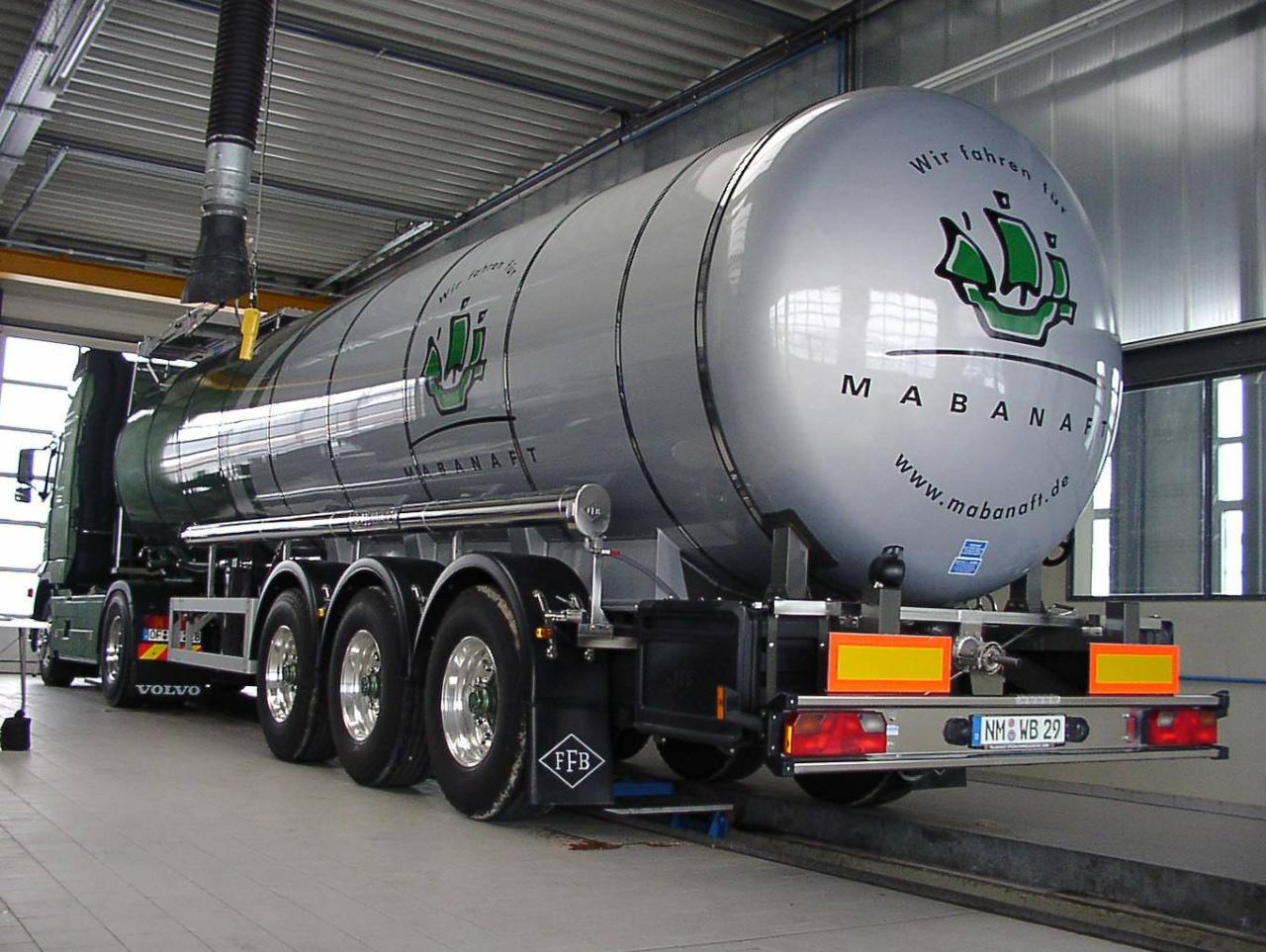
A successful cyberattack on Europe’s major oil terminals could have devastating consequences, disrupting fuel supplies, impacting global economies, and potentially causing widespread societal disruption. Understanding the potential attack vectors and methods is crucial for developing effective cybersecurity defenses. This section explores the various ways a sophisticated attacker might compromise these critical infrastructure systems.
The vulnerability of oil terminals stems from their reliance on interconnected systems, including operational technology (OT) networks, industrial control systems (ICS), and information technology (IT) infrastructure. These systems often lack robust security measures, creating opportunities for attackers to exploit weaknesses and gain unauthorized access.
Potential Attack Vectors
Several pathways could be exploited by malicious actors to infiltrate and disrupt oil terminal operations. These range from exploiting weaknesses in internet-facing systems to leveraging insider threats or physical access to compromised devices.
- Internet-facing systems: Many terminals use internet-connected systems for remote monitoring, maintenance, or data transfer. These systems can be vulnerable to various attacks, including phishing, malware infections, and denial-of-service (DoS) attacks.
- Remote Desktop Protocol (RDP): RDP is frequently used for remote access to terminal systems. However, unsecured RDP connections can be easily compromised by brute-force attacks or malware exploiting vulnerabilities.
- Supply chain attacks: Attackers might compromise software or hardware supplied to the terminal, introducing malicious code that remains undetected until activated.
- Social engineering: Manipulating employees to divulge sensitive information or grant access to systems through phishing emails, phone calls, or other deceptive tactics.
- Physical access: Gaining physical access to a terminal’s facilities to install malware, manipulate hardware, or steal data.
Attack Methods and Malware
Once an attacker gains access, various methods can be employed to disrupt operations. These methods often involve deploying specific types of malware or exploiting known vulnerabilities.
- Data breaches: Attackers could steal sensitive data, including operational plans, customer information, or intellectual property. This could lead to financial losses, reputational damage, and regulatory penalties.
- System shutdown: Malicious code could be used to disable critical systems, halting operations and causing significant disruptions to fuel supply chains. This might involve targeting SCADA systems or other control systems.
- Physical damage: In extreme cases, attackers might attempt to cause physical damage to equipment by manipulating control systems. This could lead to explosions, fires, or other catastrophic events.
- Ransomware: Encrypting critical data and demanding a ransom for its release. This could halt operations until the ransom is paid.
- Advanced Persistent Threats (APTs): Sophisticated, long-term attacks aimed at gaining persistent access to systems and stealing information over an extended period. These attacks are often difficult to detect and remove.
Examples of malware that could be used include Stuxnet (though modified for this target), Triton, Industroyer, and various custom-built ransomware strains designed to target industrial control systems. Exploits targeting vulnerabilities in specific industrial protocols (e.g., Modbus, OPC UA) could also be employed.
Categorization of Attack Methods
The following table categorizes attack methods by their target system and the level of impact they could have on oil terminal operations.
| Attack Method | Target System | Impact Level |
|---|---|---|
| Ransomware | IT infrastructure, potentially OT systems | System shutdown, data breach |
| DoS attack | Internet-facing systems | System shutdown, service disruption |
| Malware (e.g., Stuxnet variant) | Industrial Control Systems (ICS) | System shutdown, physical damage (potential) |
| Phishing | Employees | Data breach, system compromise |
| Supply chain attack | Software/hardware | System compromise, data breach, physical damage (potential) |
Security Measures and Prevention: Cyber Attack On Europes Major Oil Terminal
The recent cyberattack on Europe’s major oil terminal highlights the critical need for robust cybersecurity measures in critical infrastructure. Protecting these assets requires a multi-layered approach encompassing physical security, robust cybersecurity protocols, and a proactive stance towards threat detection and response. Ignoring these crucial aspects leaves these vital facilities vulnerable to crippling attacks with far-reaching consequences.
A layered security architecture is essential for effective protection. This involves integrating multiple security controls that work together to defend against attacks, ensuring that even if one layer fails, others remain in place to mitigate the threat. This approach relies on the principle of defense in depth, making it significantly harder for attackers to breach the system.
Layered Security Architecture for Oil Terminals
A layered security architecture for an oil terminal should incorporate both physical and cyber security components. Physical security acts as the first line of defense, while cybersecurity measures protect the digital systems controlling operations. The integration of these two aspects is crucial for comprehensive protection. Consider a scenario where an attacker gains unauthorized physical access; robust cybersecurity measures would prevent them from exploiting this access to compromise the terminal’s operational technology (OT) systems.
The physical layer includes perimeter fencing with intrusion detection systems, CCTV surveillance covering all access points and blind spots, access control systems (ACS) using biometric authentication and physical security personnel. The cyber layer involves network segmentation, firewalls, intrusion detection/prevention systems (IDS/IPS), data loss prevention (DLP) tools, endpoint detection and response (EDR) solutions, and regular software patching and updates. Furthermore, robust backup and disaster recovery plans are essential to ensure business continuity in the event of a successful attack.
Regular Security Audits and Penetration Testing
Regular security audits and penetration testing are critical for identifying vulnerabilities before attackers can exploit them. Security audits provide a comprehensive assessment of an organization’s security posture, identifying weaknesses in policies, procedures, and technologies. Penetration testing simulates real-world attacks to uncover exploitable vulnerabilities, providing actionable insights for remediation. These assessments should cover both physical and cyber security aspects, including network infrastructure, OT systems, and physical access controls.
For instance, a penetration test might involve attempting to exploit vulnerabilities in the terminal’s SCADA system or physically gaining access to restricted areas to assess the effectiveness of physical security measures. The results of these tests should be used to prioritize remediation efforts and continuously improve the security posture.
Implementing Multi-Factor Authentication
Multi-factor authentication (MFA) significantly enhances security by requiring users to provide multiple forms of authentication to verify their identity. This makes it much harder for attackers to gain unauthorized access, even if they obtain a password. Implementing MFA across all systems and access points, including physical access control systems and network access, is a critical step in strengthening security.
For example, accessing a critical system might require a password, a one-time code generated by an authenticator app, and biometric verification. This layered approach significantly increases the difficulty for attackers to gain unauthorized access. The cost of implementing MFA is significantly outweighed by the reduced risk of a successful breach and the potential financial and reputational damage that can result from a successful cyberattack.
Response and Recovery Strategies
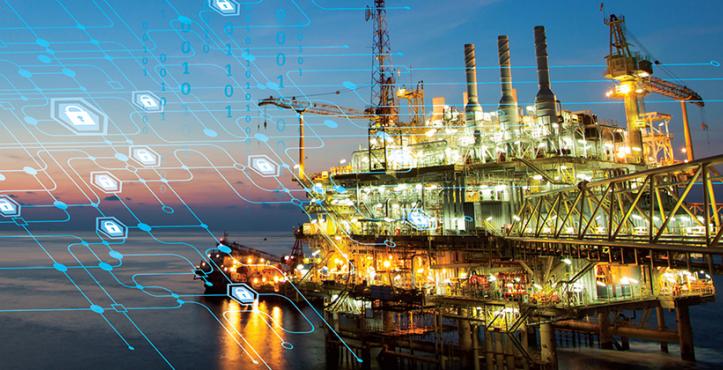
A successful cyberattack on a major European oil terminal would necessitate a swift and coordinated response, encompassing immediate containment, damage assessment, system restoration, and a comprehensive review of security protocols. The speed and effectiveness of this response directly impact the economic and geopolitical ramifications of the attack, underscoring the critical need for well-defined strategies and robust incident response teams.The initial response phase is paramount, focusing on minimizing further damage and preserving evidence.
This phase involves isolating affected systems, containing the spread of malware, and securing all compromised data. A parallel effort should be dedicated to identifying the attack vector and the extent of the breach. This includes assessing the compromised systems, data exfiltration, and potential impacts on downstream operations. A clear communication plan is crucial here, keeping stakeholders, including government agencies and the public, informed of the situation and the response efforts.
Incident Response Steps
Following a successful cyberattack, a structured incident response plan is vital. This plan should Artikel clear steps to be taken, assigning responsibilities to specific individuals or teams. The plan should be regularly tested and updated to ensure its effectiveness in addressing evolving threats. A well-defined escalation path is also crucial, ensuring that appropriate authorities are notified promptly and that decisions are made efficiently.
- Containment: Immediate isolation of affected systems to prevent further damage and data exfiltration. This might involve disconnecting affected networks or servers from the internet and internal networks.
- Eradication: Removal of malware and malicious code from compromised systems. This process requires thorough analysis and may involve specialized tools and expertise.
- Recovery: Restoration of affected systems and data from backups. This step may involve restoring systems to a previous state or rebuilding them from scratch.
- Post-Incident Activity: Comprehensive review of the incident, including a root cause analysis to identify vulnerabilities and improve security measures. This phase also includes reporting to relevant authorities and stakeholders.
Restoring Terminal Operations
Restoring operations after a cyberattack on an oil terminal requires a phased approach, prioritizing critical systems and functions. This process involves a combination of technical expertise, logistical planning, and careful coordination with various stakeholders. The recovery process will likely involve multiple teams working in parallel, focusing on different aspects of the terminal’s operations. For instance, one team might focus on restoring the control systems for oil flow, while another might concentrate on restoring communication networks.
The goal is to resume operations safely and efficiently, minimizing further disruption.
- Prioritization: Identifying and prioritizing critical systems and functions that need to be restored first. This might include systems controlling pipeline flow, storage tanks, and security systems.
- System Restoration: Restoring individual systems from backups or rebuilding them from scratch. This may involve reinstalling software, configuring hardware, and restoring data.
- Testing and Validation: Thoroughly testing restored systems to ensure they are functioning correctly and securely before bringing them back online.
- Phased Rollout: Gradually bringing systems back online, starting with the most critical ones and then moving to less critical systems.
Incident Response Team and Communication Plan
A robust incident response team is crucial for effective response and recovery. This team should consist of experts in cybersecurity, IT, operations, public relations, and legal affairs. Clear roles and responsibilities should be defined for each team member, and regular training and drills should be conducted to ensure preparedness. The team needs to be able to function effectively under pressure, making quick decisions and coordinating actions across different departments and organizations.A comprehensive communication plan is equally vital.
The recent cyber attack on Europe’s major oil terminal really highlights the vulnerability of critical infrastructure. Thinking about building resilient systems, I’ve been researching domino app dev, the low-code and pro-code future , as a way to potentially improve security and response times in similar situations. Rapid development cycles could be key to patching vulnerabilities and mitigating future attacks on vital energy sectors.
Hopefully, lessons learned from this incident will lead to better security protocols.
This plan should Artikel how information will be shared with internal stakeholders, external partners, government agencies, and the public. This includes establishing clear communication channels, defining messaging strategies, and assigning responsibility for communication to specific individuals or teams. Maintaining open and transparent communication builds trust and helps manage expectations during a crisis.
International Cooperation
Large-scale cyberattacks on critical infrastructure, such as oil terminals, often transcend national borders, requiring international cooperation to effectively respond and prevent future attacks. This cooperation may involve sharing information, coordinating investigations, and providing mutual assistance. International agreements and frameworks can facilitate this cooperation, establishing mechanisms for information sharing and joint response efforts. Examples of such cooperation can be seen in responses to previous large-scale cyberattacks, where countries have collaborated to identify perpetrators, share intelligence, and coordinate their responses.
The establishment of joint task forces and information-sharing platforms can be critical in these situations. For instance, the sharing of threat intelligence between nations could help prevent similar attacks in the future.
Geopolitical Implications
A successful cyberattack on Europe’s major oil terminal would have far-reaching geopolitical consequences, significantly impacting international relations and energy markets. The nature of the attack – state-sponsored or non-state actor – would dramatically shape the response and the resulting geopolitical landscape.The attribution of the attack is crucial. Differing geopolitical responses would emerge depending on whether a nation-state or a non-state actor is identified as the perpetrator.
A state-sponsored attack would likely trigger a far more severe and potentially escalatory response than an attack attributed to a non-state actor, even if the impact on infrastructure were identical. The international community’s reaction would be shaped by the perceived level of threat and the credibility of attribution.
State-Sponsored vs. Non-State Actor Attacks: Geopolitical Consequences
A state-sponsored attack carries significantly higher geopolitical stakes. It would be viewed as an act of aggression, potentially triggering retaliatory measures and a significant escalation of tensions. For instance, if a hostile nation were identified as the perpetrator, it could lead to diplomatic sanctions, economic countermeasures, or even military responses, depending on the severity of the attack and the involved nations’ relationships.
In contrast, an attack by a non-state actor, while still disruptive and damaging, would likely elicit a different response. The focus would shift towards strengthening cybersecurity defenses, international cooperation in combating cyberterrorism, and potentially targeted counter-terrorism operations. However, even in the case of a non-state actor, the possibility remains that a state might be implicated in supporting or enabling the attack, leading to a more complex and potentially escalatory situation.
Potential for Escalation of Conflict
A significant cyberattack on critical oil infrastructure could easily escalate into a broader conflict. The disruption of energy supplies would trigger economic instability, potentially leading to political unrest and social upheaval within affected nations. This instability could be exploited by hostile actors, further escalating tensions. The initial response might be defensive, focusing on restoring infrastructure and identifying perpetrators. However, if attribution leads to accusations of state-sponsored attacks, the response could escalate to include economic sanctions, diplomatic isolation, and potentially even military action, depending on the severity of the damage and the geopolitical context.
The 2008 Russo-Georgian War, though not directly triggered by a cyberattack, serves as an example of how disruptions in a key sector can rapidly escalate into broader conflict.
International Responses to a Cyberattack on Oil Infrastructure
The international community’s response would be multifaceted and depend heavily on the attribution of the attack.
Potential international responses could include:
- Condemnation and diplomatic pressure: International organizations like the UN and NATO would likely issue strong condemnations, urging cooperation in identifying and holding perpetrators accountable.
- Economic sanctions: Sanctions targeting the perpetrators’ financial institutions or key industries could be imposed.
- Enhanced cybersecurity cooperation: Increased information sharing and collaborative efforts to improve cybersecurity defenses across nations would be prioritized.
- Joint military exercises and deployments: In the case of a state-sponsored attack, military exercises and deployments could be used to demonstrate resolve and deter further aggression.
- Legal proceedings: International courts could be involved in prosecuting perpetrators or seeking reparations for damages.
Ripple Effects Across Global Energy Markets, Cyber attack on europes major oil terminal
Imagine a scenario where a major European oil terminal is rendered inoperable for several weeks due to a sophisticated cyberattack. The immediate impact would be a sharp reduction in oil supply to Europe and potentially other regions depending on the terminal’s role in global distribution networks. This supply disruption would lead to a rapid increase in oil prices, triggering inflation and economic instability across the globe.
The ripple effects would be extensive:
- Increased oil prices: The immediate and significant increase in oil prices would impact transportation, manufacturing, and numerous other sectors globally.
- Economic instability: Inflation and reduced economic growth would be felt in many countries, potentially leading to social unrest.
- Geopolitical tensions: Competition for remaining oil supplies could intensify, exacerbating existing geopolitical tensions between nations.
- Energy security concerns: Nations would reassess their energy security strategies, potentially leading to increased investment in alternative energy sources and diversification of energy imports.
- Shifting global power dynamics: The incident could shift the global balance of power, with countries possessing secure and diversified energy supplies gaining a strategic advantage.
Final Conclusion
A successful cyberattack on Europe’s major oil terminals wouldn’t just be a technological incident; it would be a geopolitical earthquake. The ripple effects would be felt globally, impacting energy prices, supply chains, and international relations. While the threat is serious, it’s not insurmountable. By investing in robust cybersecurity measures, fostering international collaboration, and developing comprehensive response plans, we can significantly reduce the risk and ensure the continued flow of energy to Europe and beyond.
The future of energy security depends on our proactive approach to cybersecurity.
Frequently Asked Questions
What types of malware could be used in an attack on an oil terminal?
A variety of malware could be employed, including ransomware to encrypt critical systems, wiper malware to destroy data, and sophisticated backdoors allowing persistent access and control.
How long could an oil terminal be offline after a successful cyberattack?
The downtime could range from days to weeks, depending on the severity of the attack and the effectiveness of the recovery plan. The complexity of the systems and the need for thorough security checks before restoring operations significantly impacts recovery time.
What role does insurance play in mitigating the financial impact of such an attack?
Cyber insurance policies can help cover some of the financial losses resulting from a cyberattack, including business interruption, data recovery costs, and legal fees. However, the coverage varies significantly depending on the policy and the specific circumstances of the attack.
What are the ethical considerations surrounding the use of cybersecurity tools and techniques in the oil industry?
Ethical considerations include data privacy, transparency, and the potential for misuse of surveillance technologies. Balancing security needs with individual rights and societal values is a critical challenge.
